Choosing the ideal Kilim Sofreh for your home can transform your living space into a haven of comfort and style. A well-selected Kilim Sofreh not only enhances your decor but also influences your mood and well-being. The right rug can create a visually pleasing environment, promoting relaxation and happiness. When selecting a Kilim Sofreh, consider factors like size, budget, style, and authenticity. Whether you opt for a Sofreh Class Excellent, Sofreh Class A, Sofreh Class B, or Sofreh Class C, each choice reflects your personal taste and adds a unique touch to your home. Embrace the beauty and cultural richness of a Kilim Sofreh to elevate your interior design.
Understanding Your Space and Dimensions
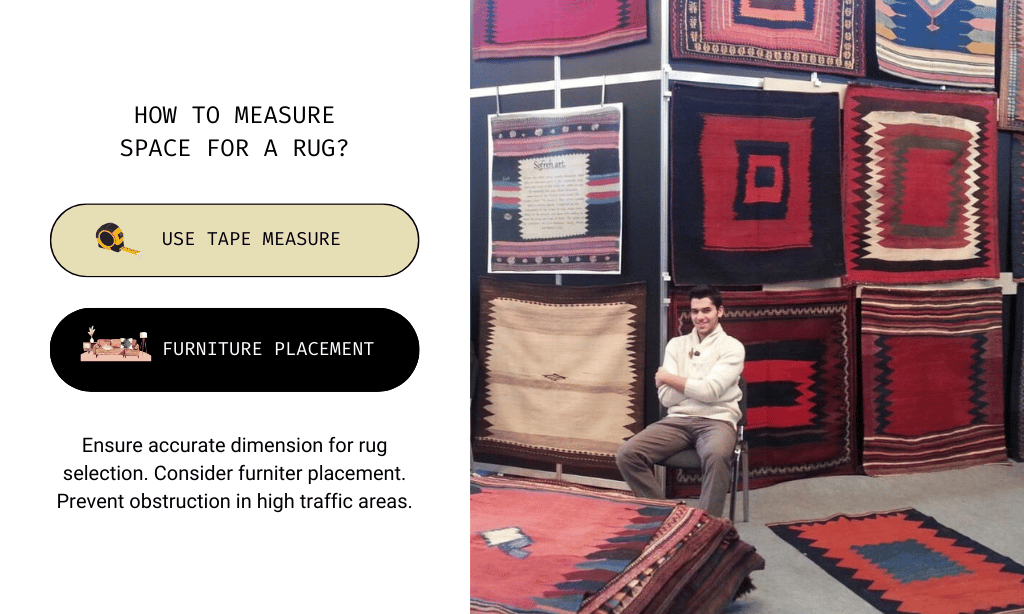
Selecting the perfect Kilim Sofreh for your home begins with understanding your space and dimensions. A well-fitted rug can transform a room, making it feel more cohesive and inviting. Let’s explore how to measure your space accurately and choose the right size for your needs.
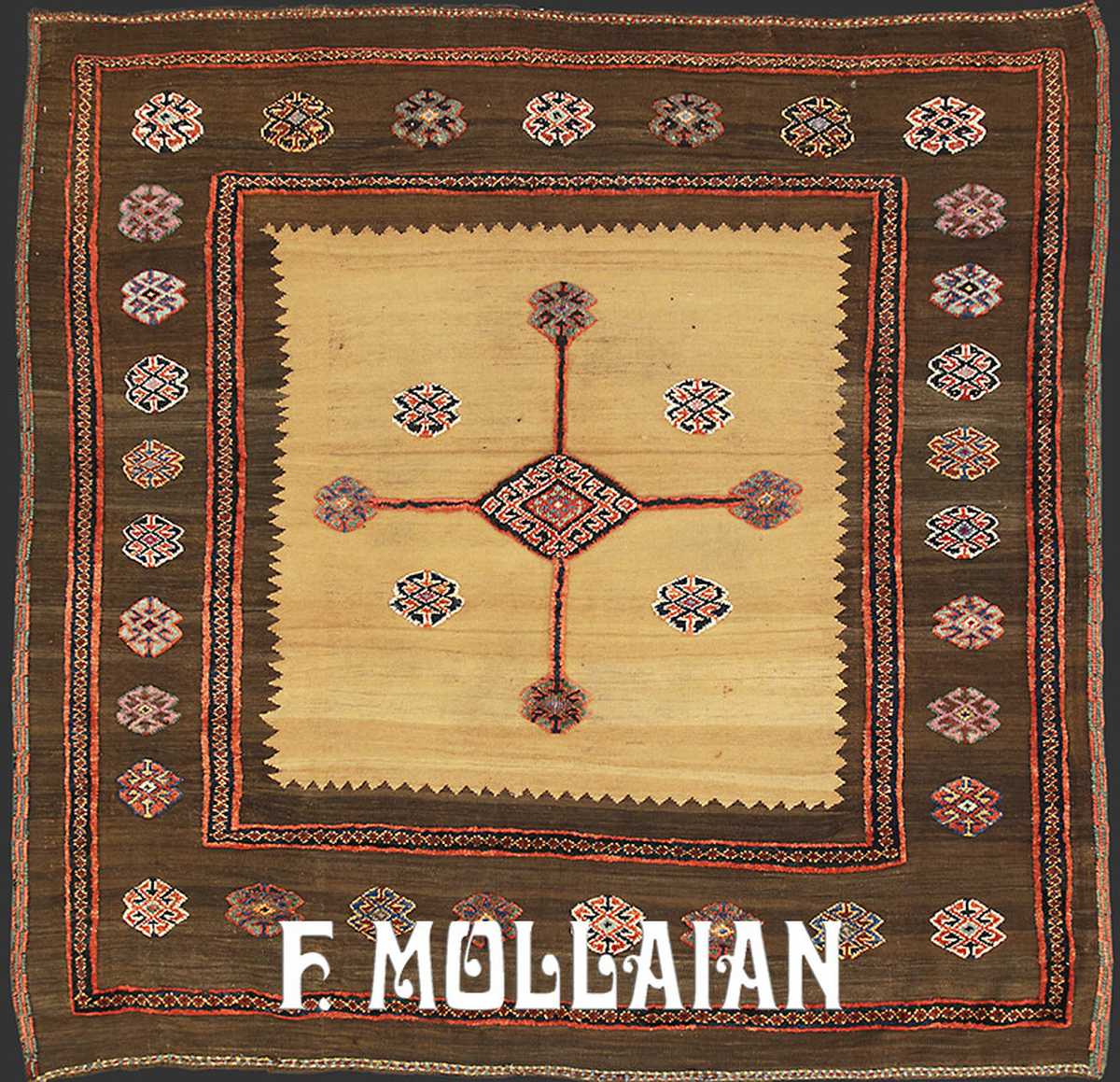
This Antique Persian Varamin Sofreh Kilim (ca. 1880) is a handmade wool textile featuring a striking geometric design and tribal motifs, perfect for adding historical charm to any space
Measuring Your Space
Accurate measurements are crucial when selecting a Kilim Sofreh. You want to ensure that the rug fits seamlessly into your room without overwhelming or underwhelming the space.
Tips for Accurate Measurements
- Use a Tape Measure: Start by measuring the length and width of the area where you plan to place the rug. Record these dimensions to refer back to when shopping.
- Consider Furniture Placement: Measure the distance between furniture pieces and the walls. This helps you determine how much of the rug will be visible and ensures it complements your existing layout.
- Account for Doorways: Ensure that the rug won’t obstruct doorways or pathways. This consideration is especially important in high-traffic areas.
Considering Room Layout and Furniture
Your room’s layout and furniture arrangement play a significant role in choosing the right Kilim Sofreh. A well-placed rug can anchor your furniture and define the space.
- Living Room: Position the front legs of your sofa and chairs on the rug to create a unified seating area.
- Dining Room: Ensure the rug extends beyond the table to accommodate chairs, even when pulled out.
- Bedroom: Place the rug under the bed, extending it on either side to provide a soft landing for your feet.
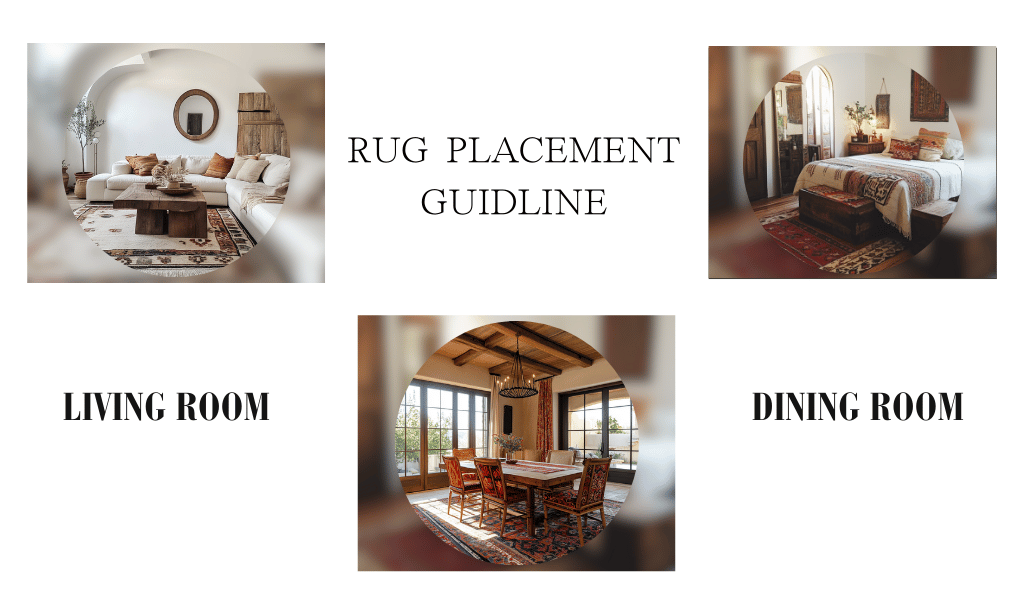
Choosing the Right Size
Once you’ve measured your space, it’s time to select the appropriate size for your Kilim Sofreh. The right size enhances the room’s aesthetics and functionality.
Standard Sizes and Their Uses
Standard sizes offer versatility and ease of selection. Common dimensions include:
- 100cm x 100cm: Ideal for small spaces or as an accent piece.
- 140cm x 140cm: Perfect for medium-sized rooms or under coffee tables.
These sizes fit well in various settings, providing a balanced look without overwhelming the space.
Custom Sizes for Unique Spaces
If your room has unique dimensions or specific design requirements, consider custom-sized Kilim Sofreh options. Many retailers offer customization, allowing you to tailor the rug to your exact needs. This option ensures a perfect fit and adds a personalized touch to your decor.
Choosing the right Kilim Sofreh involves careful consideration of your space and dimensions. By measuring accurately and selecting the appropriate size, you can enhance your home’s aesthetic appeal and create a harmonious environment.
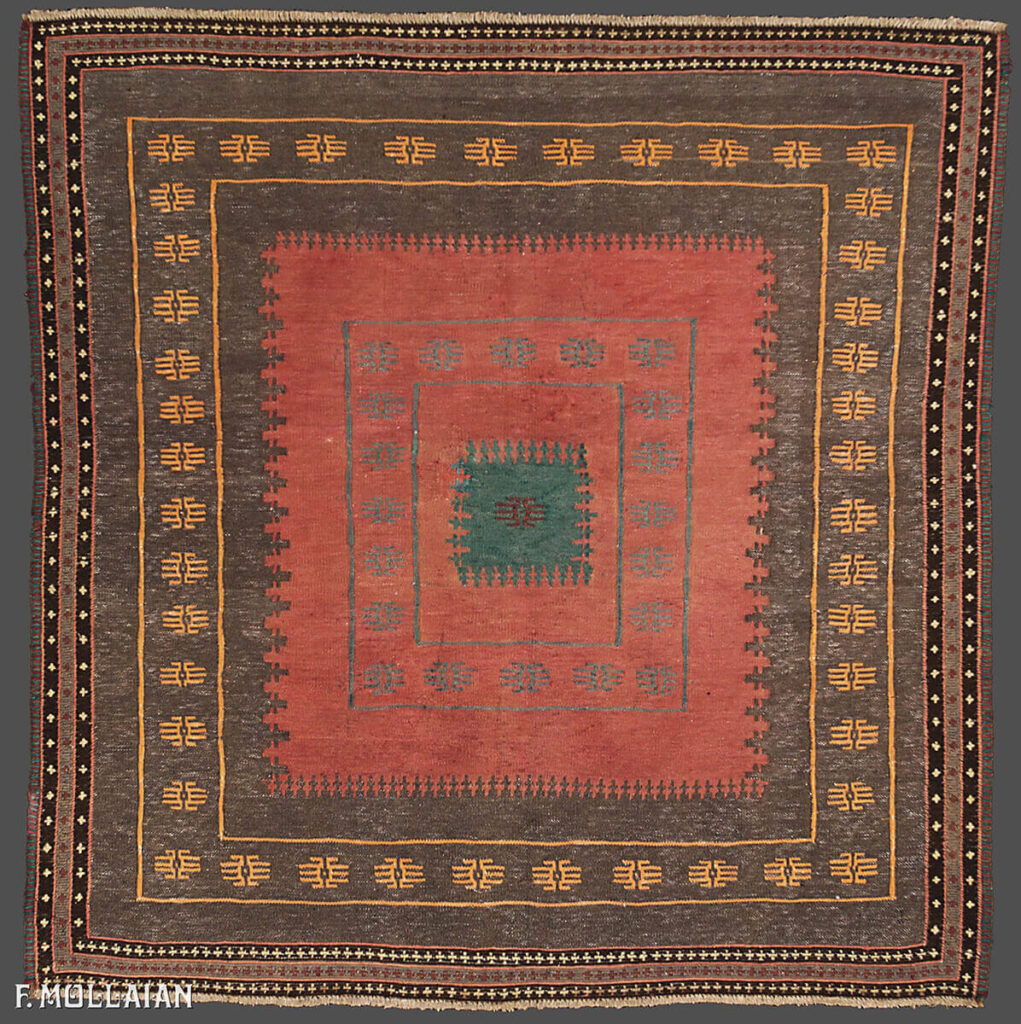
This Persian Sofreh Kilim (ca. 1950) showcases a bold tribal design in red, green, and earthy tones, handwoven in wool on a cotton foundation. Perfect as a floor covering or textile accent.
Budgeting and Financial Considerations
When embarking on your carpet shopping journey, setting a realistic budget is crucial. A well-planned budget ensures you find a Kilim Sofreh that meets your aesthetic desires without straining your finances. Let’s explore how to navigate the financial aspects of rug shopping effectively.
Setting a Realistic Budget
Creating a budget involves understanding the factors that influence the price of a Sofreh. Prices can vary significantly based on several elements.
Factors Influencing Price
- Material Quality: The type of fibers used in the rug, such as wool or cotton, can affect the price. Natural fibers often command higher prices due to their durability and aesthetic appeal.
- Craftsmanship: Handmade rugs, especially those with intricate designs, tend to be more expensive. The time and skill involved in crafting these pieces add to their value.
- Size and Design Complexity: Larger rugs or those with complex patterns may cost more. Consider the size and design that best fits your space and budget.
- Origin and Age: Vintage or antique Sofreh pieces, like the Antique Persian Afshar Sofreh Kilim rug, often have historical significance, which can increase their price.
Balancing Quality and Cost
Finding the right balance between quality and cost is essential. While it’s tempting to opt for cheaper options, investing in a high-quality carpet ensures longevity and satisfaction. Consider the long-term benefits of a durable rug that withstands wear and tear.
Where to Buy
Choosing the right place to purchase your Sofreh can impact both your budget and buying experience. Let’s examine the options available.
Online vs. In-Store Options
- Online Shopping: Offers convenience and a wide selection. You can compare prices and styles from various retailers. However, ensure the website provides detailed product descriptions and return policies.
- In-Store Shopping: Allows you to see and feel the carpet before purchasing. This option helps you assess the texture and color accuracy. Stores often provide personalized assistance, guiding you through your choices.
Tips for Finding Deals and Discounts
- Seasonal Sales: Look for sales during holidays or end-of-season clearances. Retailers often offer discounts on rugs during these times.
- Loyalty Programs: Join store loyalty programs to receive notifications about exclusive deals and discounts.
- Price Comparison: Compare prices across different platforms. For instance, a Sofreh Class B might be priced at €550.00, while a Sofreh Class C could be €350.00. Understanding these differences helps you make informed decisions.
By setting a realistic budget and exploring various purchasing options, you can find the perfect Kilim Sofreh that complements your home and financial plan. Remember, a well-chosen carpet not only enhances your decor but also represents a wise investment in your living space.
Style and Design Preferences
Selecting the right style and design for your Kilim Sofreh can significantly enhance your home’s aesthetic. The patterns and colors you choose should reflect your personal taste and complement your existing decor. Let’s delve into the world of motifs, patterns, and colors to help you make an informed decision.
Exploring Different Motifs and Patterns
Kilim rugs boast a rich history, with designs that have evolved over centuries. These patterns often tell stories, connecting the weaver to the owner through intricate designs.
Traditional vs. Modern Designs
Traditional Kilim designs often feature geometric shapes and symbolic motifs. These patterns have been passed down through generations, each carrying cultural significance. For example, you might find motifs representing fertility, protection, or prosperity. On the other hand, modern designs offer a fresh take on these classic patterns. They incorporate contemporary elements, making them suitable for modern interiors. Whether you prefer the timeless appeal of traditional designs or the sleek look of modern styles, there’s a Kilim Sofreh that fits your taste.
Popular Motifs and Their Meanings
Understanding the meanings behind popular motifs can add depth to your selection. For instance, the ram’s horn symbolizes strength and masculinity, while the eye motif offers protection against evil. These symbols not only enhance the visual appeal of your rug but also infuse your space with cultural richness. When choosing a vintage kilim, consider the story it tells and how it resonates with your personal narrative.
Choosing Colors to Match Your Decor
Colors play a crucial role in setting the mood and ambiance of a room. The right color palette can transform your space, making it feel more inviting and harmonious.
Color Psychology and Room Ambiance
Different colors evoke different emotions. Warm tones like red and orange can create a cozy and energetic atmosphere, while cool tones like blue and green promote calmness and relaxation. When selecting a Kilim Sofreh, consider how the colors will influence the room’s ambiance. A vibrant rug can become the focal point of a room, while neutral tones can blend seamlessly with your decor.
Coordinating with Existing Decor
To achieve a cohesive look, coordinate your Kilim Sofreh with your existing decor. Consider the colors of your walls, furniture, and accessories. A well-chosen rug can tie these elements together, creating a unified and stylish space. If your decor features bold patterns, opt for a simpler rug design to balance the visual interest. Conversely, a patterned Kilim can add depth and texture to a minimalist room.
By exploring different motifs, patterns, and colors, you can select a Kilim Sofreh that not only enhances your decor but also reflects your unique style. Embrace the beauty and cultural significance of these rugs to create a home that truly resonates with you.
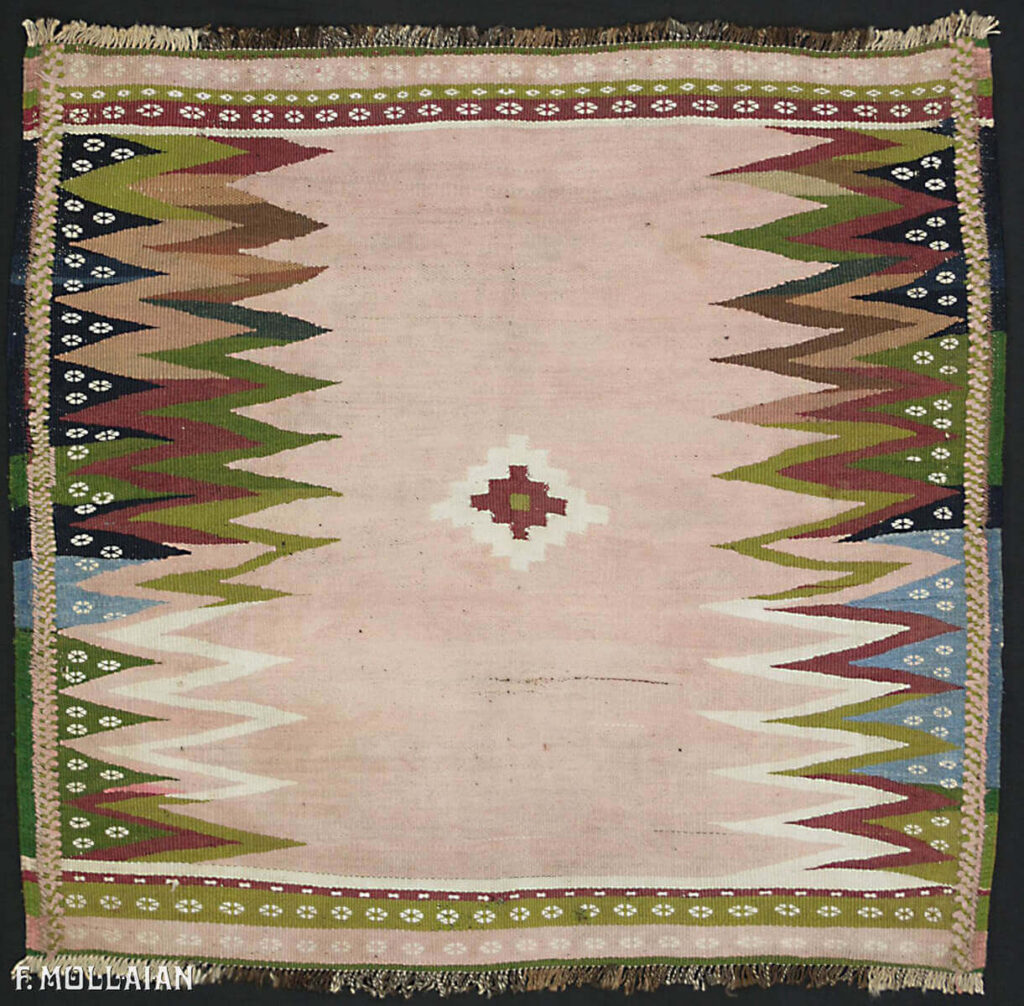
This Persian Sofreh Kilim (ca. 1950) features a bold tribal design with jagged geometric patterns and a soft pink field, handwoven in wool. A unique textile for any home
Authenticity and Quality Checks
When investing in a Kilim Sofreh, ensuring its authenticity and quality is crucial. Genuine kilims not only add aesthetic value to your home but also carry cultural and historical significance. Let’s explore how you can identify authentic kilims and evaluate their quality effectively.
Identifying Genuine Kilims
Recognizing an authentic kilim involves understanding its unique characteristics and being aware of common imitation signs. This knowledge helps you make informed purchasing decisions.
Key Characteristics of Authentic Kilims
- Flat Weave Technique: Authentic kilims are crafted using a flat weave technique, similar to a tapestry. This method results in a rug with no pile, making the design visible on both sides. As Rhia Davenport, founder of Weven, notes, “Kilim dates back over 8,000 years, and is a type of flat weaving, like a tapestry, with no pile.”
- Natural Fibers and Dyes: Genuine kilims often use natural fibers like wool or cotton and are dyed with organic colors. These materials enhance the rug’s durability and aesthetic appeal.
- Cultural Patterns: Authentic kilims feature traditional motifs and patterns that reflect the weaver’s cultural heritage. These designs often hold symbolic meanings, adding depth to the rug’s visual appeal.
Common Signs of Imitations
- Machine-Made Patterns: Imitation kilims may have machine-made patterns that lack the intricate details of handmade designs. Look for uniformity in the weave, which can indicate machine production.
- Synthetic Materials: Be cautious of kilims made with synthetic fibers or dyes. These materials can affect the rug’s longevity and authenticity.
- Inconsistent Weaving: Authentic kilims display consistent weaving techniques. Variations in the weave or pattern can signal a lack of craftsmanship, suggesting an imitation.
Evaluating Quality
Assessing the quality of a kilim involves examining its material and weaving techniques, as well as considering its longevity and maintenance needs.
Material and Weaving Techniques
- Wool and Cotton: High-quality kilims typically use wool or cotton, known for their durability and comfort. These materials ensure the rug withstands wear and tear over time.
- Expert Craftsmanship: The skill of the weaver plays a significant role in the rug’s quality. Handmade kilims often exhibit superior craftsmanship, with intricate patterns and precise weaving.
- Flat Weave Durability: As Joby R Smith, an expert in kilim and flat weave rugs, highlights, “There are flat weave rugs from all over the world such as Moroccan Berbers to Indian durries and Balkan kilims.” This technique contributes to the rug’s durability and versatility.
Longevity and Maintenance Considerations
- Proper Care: To maintain your kilim’s quality, handle it gently. Regular cleaning and avoiding harsh chemicals help preserve its fibers and colors.
- Longevity: A well-maintained kilim can last for generations, making it a valuable investment for your home. Its timeless appeal and cultural significance enhance its worth over time.
By understanding the key characteristics of authentic kilims and evaluating their quality, you can confidently select a rug that enriches your home decor. Embrace the beauty and history of these textiles, ensuring your choice reflects both authenticity and craftsmanship.
Selecting the perfect sofreh for your home involves a thoughtful process. You should consider size, budget, style, and authenticity. A well-chosen sofreh not only enhances your decor but also adds cultural depth and personal flair. Remember to measure your space accurately and set a realistic budget. Explore different motifs and colors that resonate with your style. Trust your instincts and let your personal taste guide you. Whether you choose a traditional or modern design, a sofreh can transform your space into a haven of comfort and elegance. Embrace the charm of a kilim rug to enrich your living environment.





